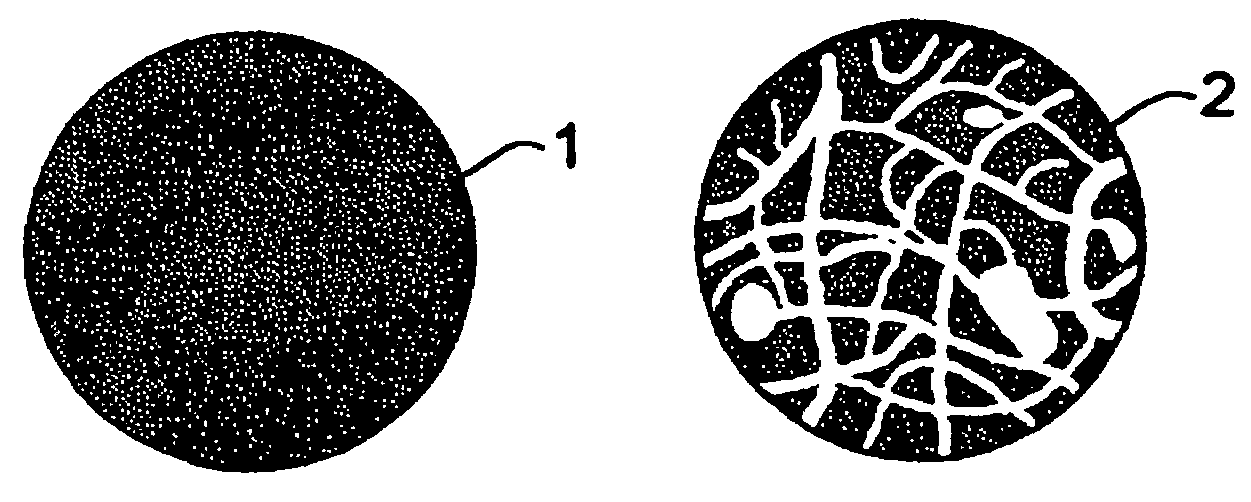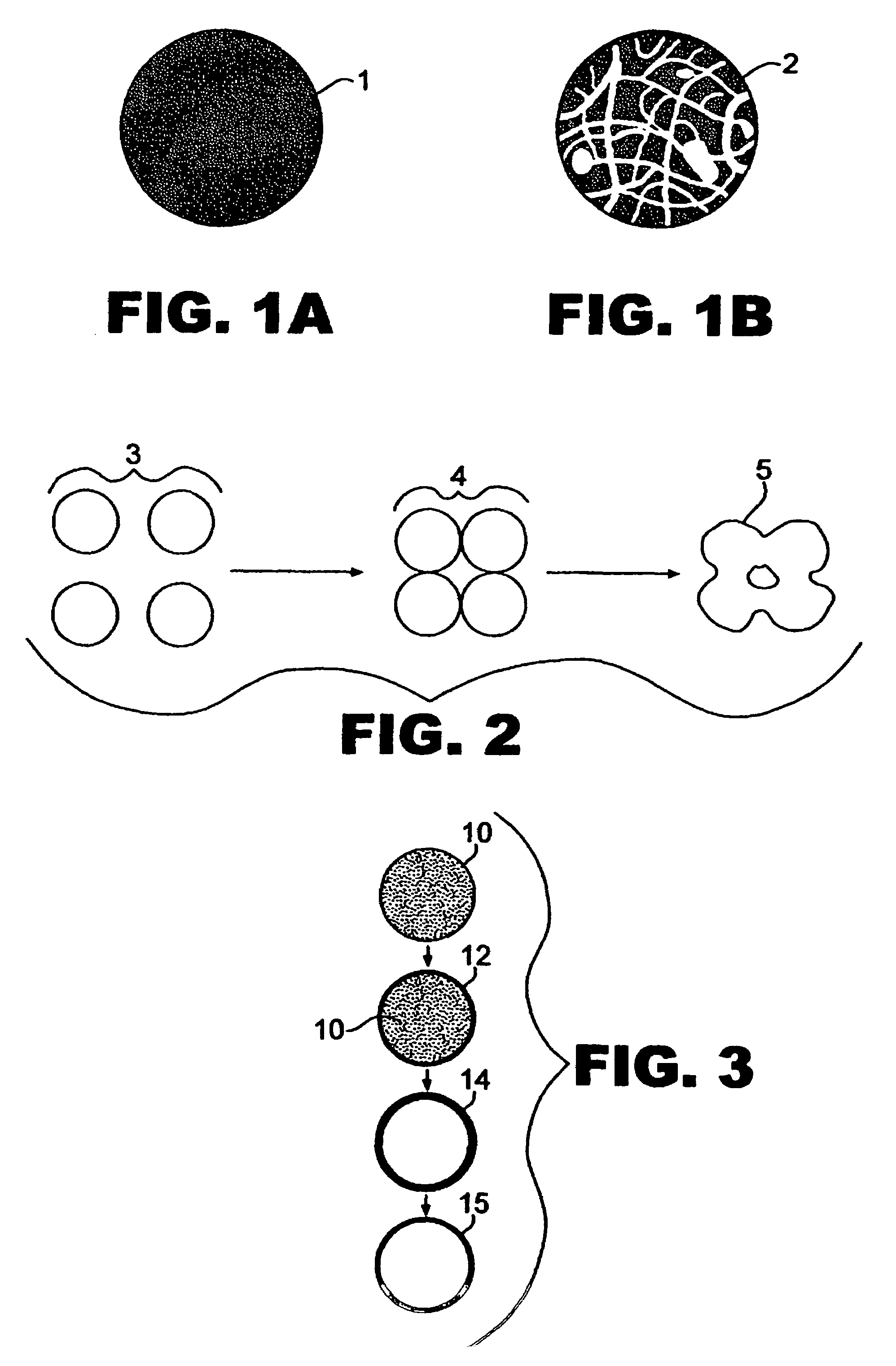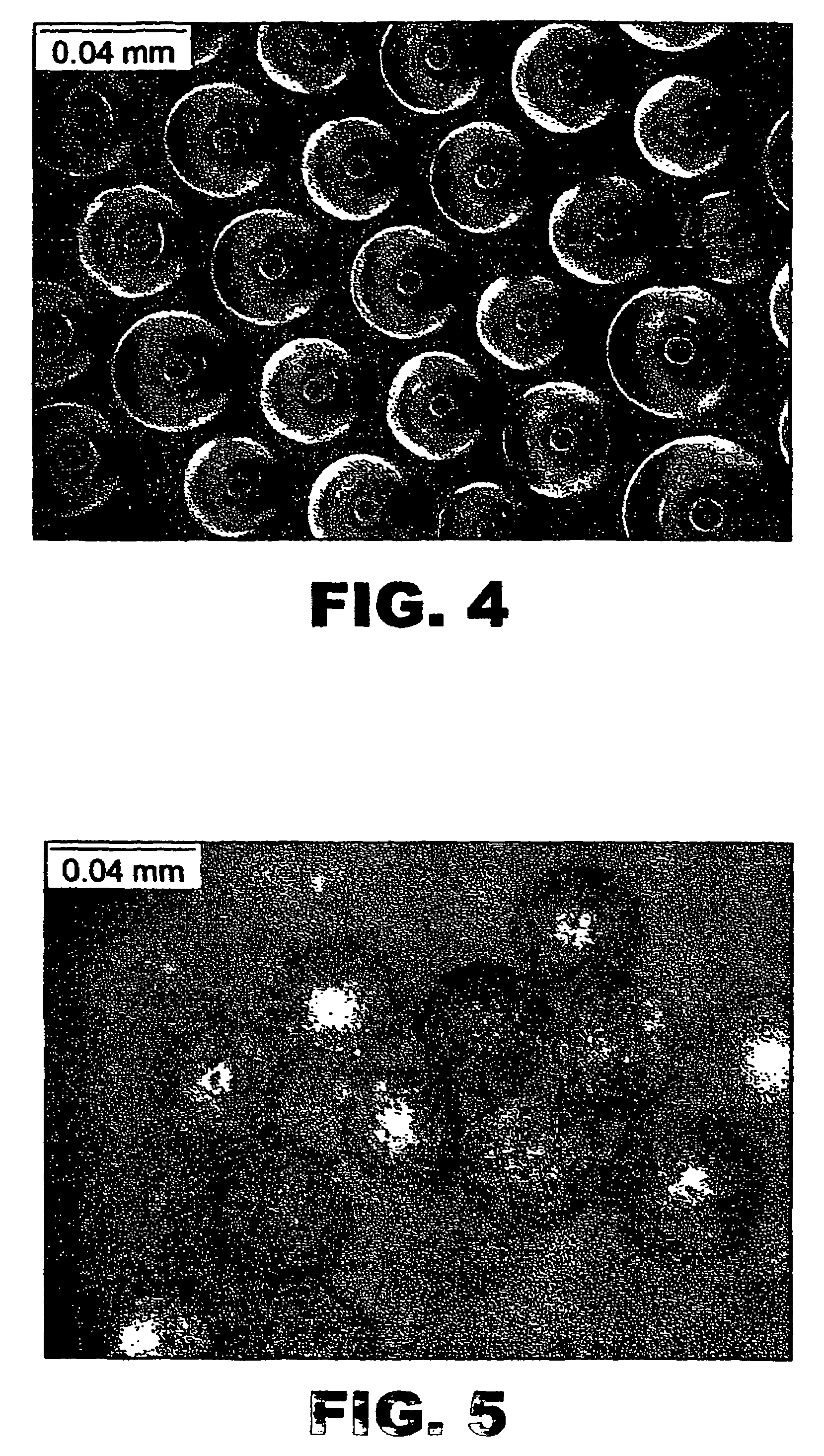Method for treating contaminated water
a technology for contaminated water and treatment methods, applied in the direction of mechanical vibration separation, contaminated groundwater/leachate treatment, disinfection, etc., can solve the problems of nanoparticles sinking slowly, affecting the quality of water treatment, so as to reduce the effect of pollutants
- Summary
- Abstract
- Description
- Claims
- Application Information
AI Technical Summary
Benefits of technology
Problems solved by technology
Method used
Image
Examples
Embodiment Construction
[0033]The present invention relates to reactive treatment of contaminated groundwater by using a porous iron structure or matrix, regardless of particle size. It is within the scope of the invention to use particles having a size range from about 1 nanometer to 1 centimeter. Porous and / or hollow iron particles possess a larger surface area to effect contaminant removal and treatment. Porous and / or hollow iron particles also have higher water permeability. Furthermore, porous and / or hollow particles have higher mobility in groundwater.
[0034]It has long been known that iron corrodes when it is exposed to water and air. Water and oxygen in air are common oxidants. Metallic or zero-valent iron (Fe0), on the other hand, is a moderate reducing reagent, which can react with dissolved oxygen and to some extent with water. It is also known that corrosion can be accelerated or inhibited by manipulating the environmental conditions and solid (metal) composition. For example, iron corrodes fast...
PUM
| Property | Measurement | Unit |
|---|---|---|
| diameter | aaaaa | aaaaa |
| thick | aaaaa | aaaaa |
| diameter | aaaaa | aaaaa |
Abstract
Description
Claims
Application Information
 Login to View More
Login to View More - R&D Engineer
- R&D Manager
- IP Professional
- Industry Leading Data Capabilities
- Powerful AI technology
- Patent DNA Extraction
Browse by: Latest US Patents, China's latest patents, Technical Efficacy Thesaurus, Application Domain, Technology Topic, Popular Technical Reports.
© 2024 PatSnap. All rights reserved.Legal|Privacy policy|Modern Slavery Act Transparency Statement|Sitemap|About US| Contact US: help@patsnap.com










